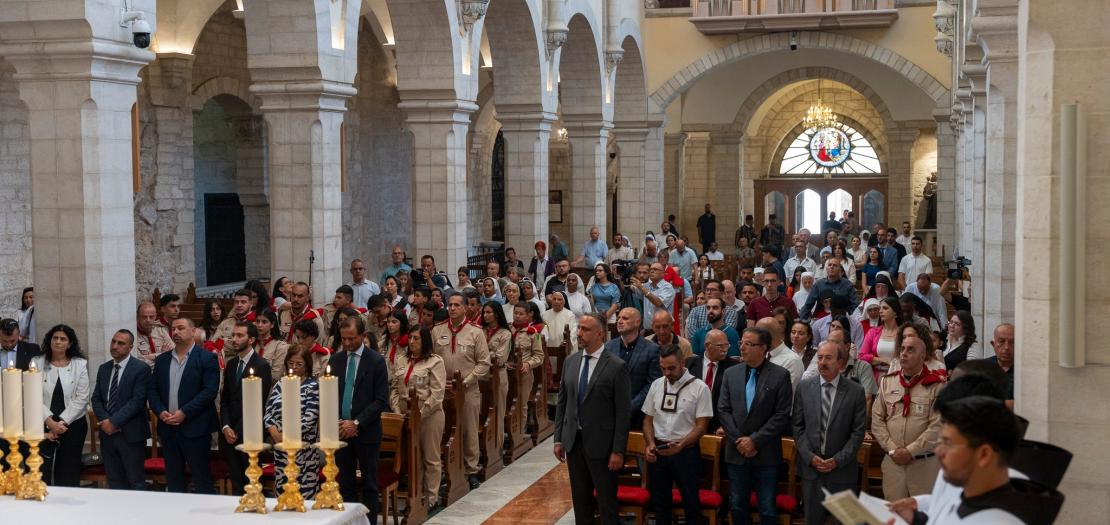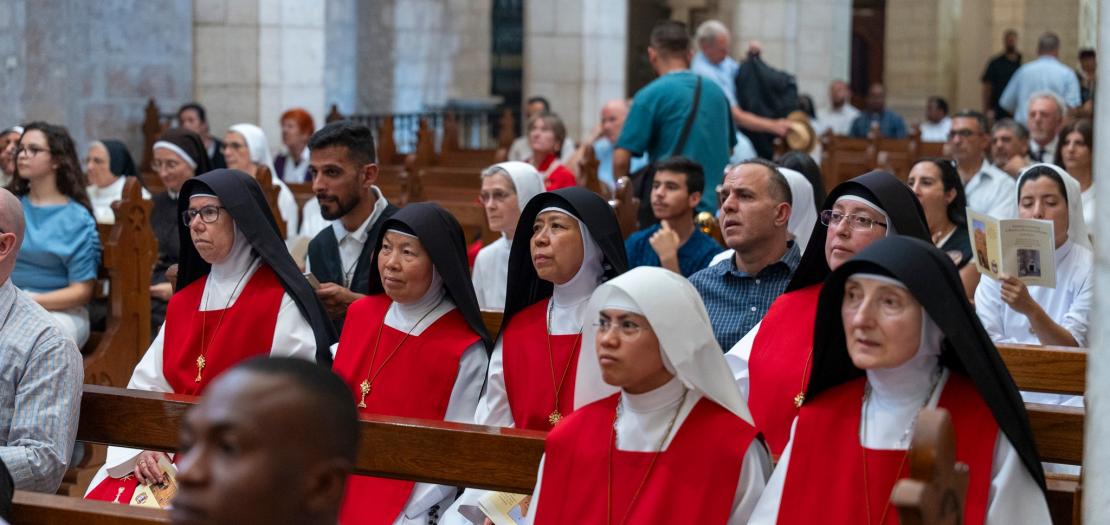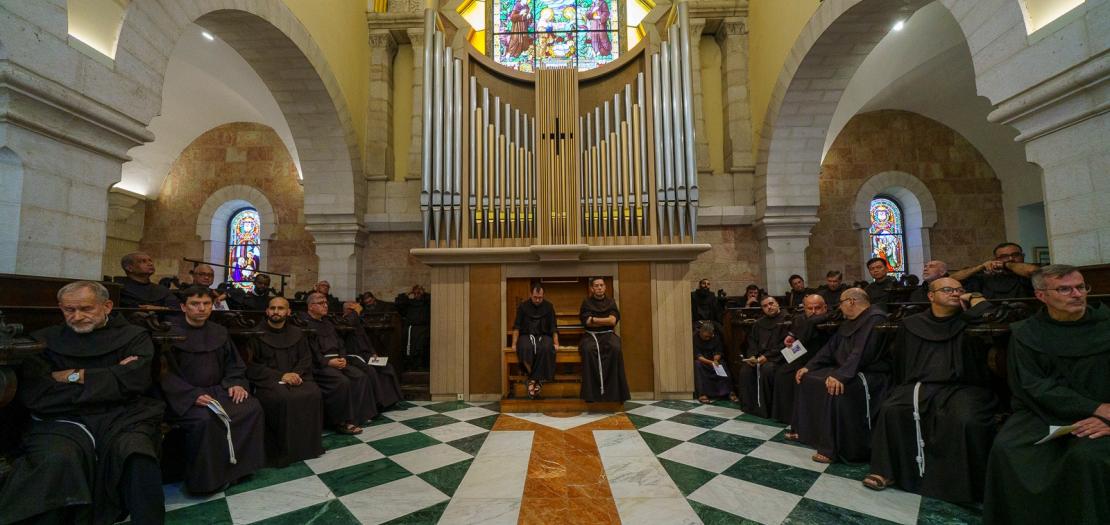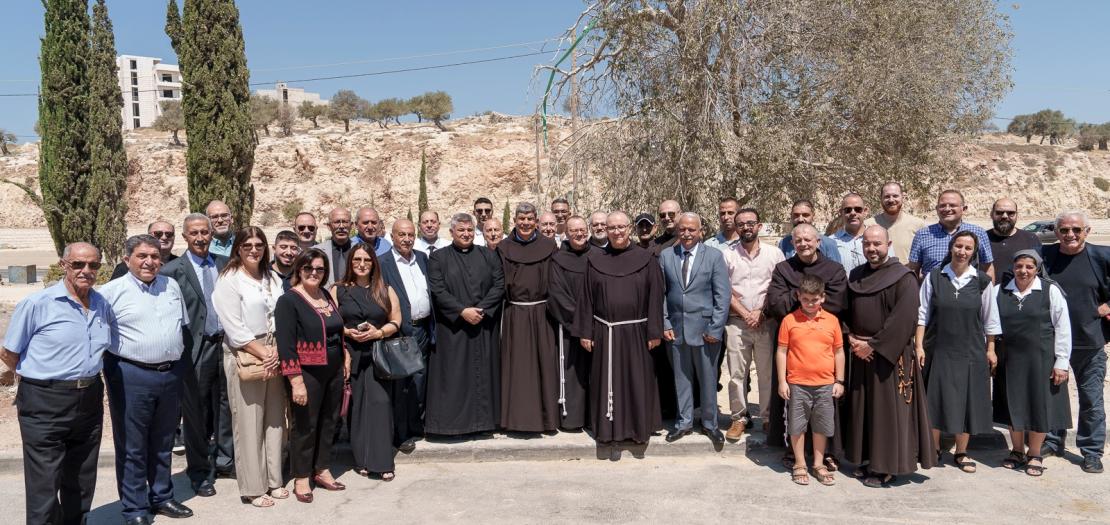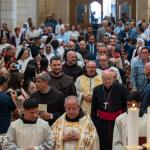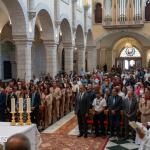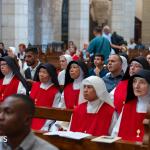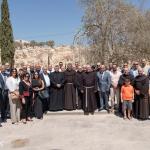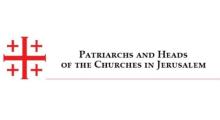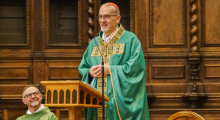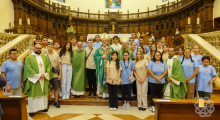Issued by the Catholic Center for Studies and Media - Jordan. Editor-in-chief Fr. Rif'at Bader - موقع أبونا abouna.org
Between July 24 and 26, 2025, Br. Francesco Ielpo made his official entrance into the three main holy sites of Christianity under the care of the Custody of the Holy Land: the Cenacle and the Holy Sepulcher in Jerusalem, and the Basilica of the Nativity in Bethlehem. This marks a significant moment in the Franciscan tradition, signifying the beginning of his service as Custos, leading the Franciscan presence in the places tied to the life of Jesus. Each stop was accompanied by a celebration and a reflection by the Custos, focused on the historical and communal significance of these places.
At the Cenacle: communion as mission
The entrance to the Cenacle, which took place early in the morning of July 24, 2025, held deep symbolic and spiritual meaning. Here, where tradition holds that Pentecost took place, the Custos emphasized the contemporaneity of the mystery: "In the moment when the Church celebrates, spatial and temporal coordinates disappear, and we become contemporaries of the mystery we celebrate."
Reflecting on the gift of the Holy Spirit, the Custos recalled that "the Cenacle becomes a new image of Sinai", no longer merely a geographical place but "an event that marks a new covenant, a new irruption of God into human history, into the heart of man."
In his address, he indicated mutual service as the way to overcome divisions: "When we don’t understand each other, when the brother living with us seems to speak another language, truly incomprehensible to us, then we need to wash one another’s feet." He also invited friars and faithful to return spiritually to this place whenever a crisis in communion is felt: "Let us make a personal pilgrimage, let us ask for grace in the holy places."
At the Holy Sepulcher: the gospel of life
In the afternoon of July 25, Br. Ielpo entered the Holy Sepulcher, the central place of Christian faith, tied to the crucifixion, burial, and resurrection of Jesus. In his speech, he reflected on the Gospel account of the women at the tomb, highlighting the contrast between the initial gesture – "they had entered one of the cemeteries of Jerusalem to venerate a dead man" – and the unexpected discovery: "He is not here. He is Risen!"
He described the resurrection as "the victory of the cross", explaining that "the path of love taken by Jesus, the path of total self-giving, is not in vain." On the contrary, it represents a new judgment on all suffering: "not a place of failure and defeat, but a place of love that reaches the gift of life."
Recalling the angel's mandate to the women – "go, tell them he goes before you" – he reminded that the disciple of Christ is one who sets out and embraces the proclamation. "The disciple is the one who receives the mission to announce this good news to be lived first of all, and to be sown in the much darkness of life." The Custos concluded by invoking the grace to "always recognize the signs of the resurrection in our lives" and to be able to announce it "with joy and fidelity."
In Bethlehem: pilgrim of peace
On the morning of July 26, Br. Ielpo was welcomed in Bethlehem, walking, as tradition dictates, along the side of the wall that separates the city from Rachel’s Tomb. The Custos’ and the Patriarch of Jerusalem’s entrances into the Palestinian city are the only moments when the gate in the wall is opened, otherwise closed. A caravan of scouts and faithful accompanied the Custos along "the Way of the Star", traditionally the beating heart of the city, now deserted and shuttered due to the lack of tourists and pilgrims. In the square of the Basilica of the Nativity, he met with civil and religious representatives of the city of Bethlehem, and then made his entrance into the Basilica, the place that holds the memory of Jesus’ birth.
In his greeting, he recalled the civil and human meaning of the Christmas message, echoing the angels’ words to the shepherds: "Glory to God in the highest and peace on earth to the people loved by the Lord."
Linking God’s glory to peace among people, he stressed that "peace on earth is the reflection of God’s glory in heaven. and the glory of God on earth is called peace." He then clarified the meaning of his presence in Bethlehem: "I come to you as a pilgrim of prayer. I come to pray with you and to invoke the gift of fraternity, of dialogue, of reconciliation and forgiveness."
The visit concluded with a call to shared responsibility and a blessing: "The Child God, laid in the manger, bless you all."



